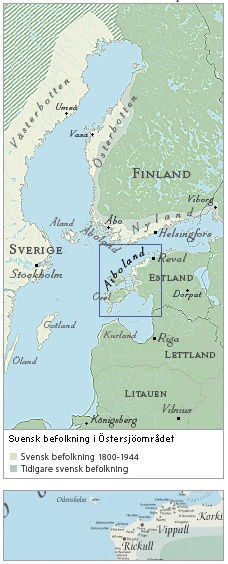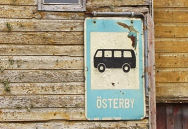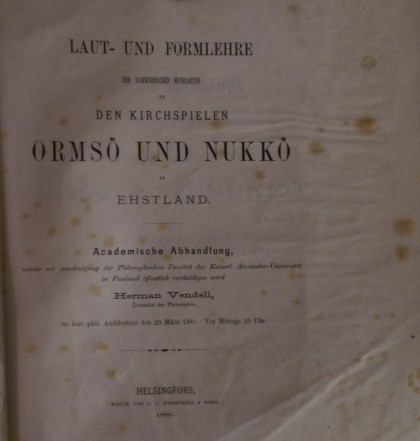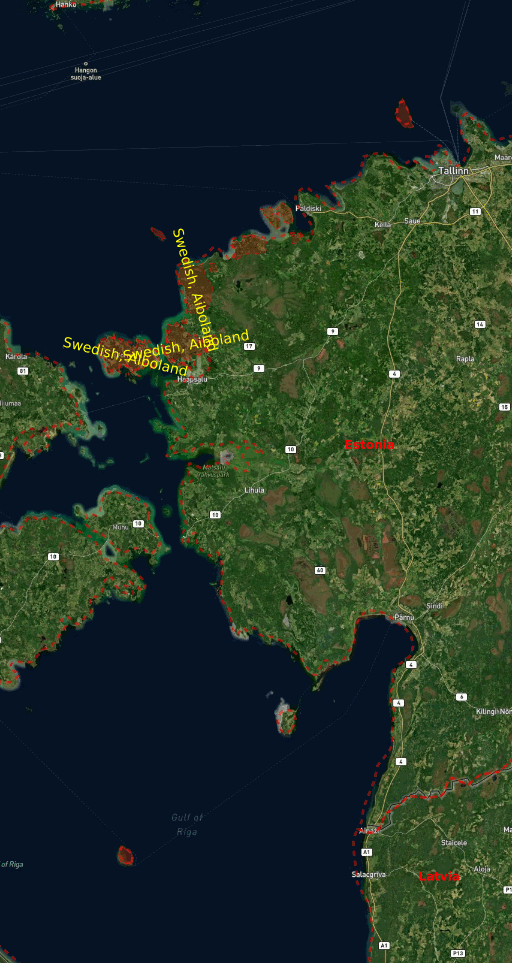Swedish, Aiboland
Facts
- Language: Swedish, Aiboland
- Alternate names: Estlandssvenska, Rannarootsi
- Language code: dswea
- Language family: Indo-European, Classical Indo-European, Germanic, Northwest Germanic, North Germanic, North Scandinavian, East-Central Swedic, East Swedic
- Dialect of: Swedish
- Number of speakers: 1000
- Script: Latin script
More information:
Introduction

The location of Aiboland, the
area where Swedish was spoken.

A traffic sign in Nuckö
The verb
The verb doesn't show any peculiarities in conjugation. The differences between Standard Swedish and the dialects are rather in spelling. For example, while standard Swedish says kör 'drive', Nuckö dialect says ker.
Sample verb
| Tense | Number | 'kŭma' (to come) | 'bít' (to bite) |
| Infinitive | kŭma | bít | |
| Present | kŭmur | bítur | |
| Preterite | Singular | kom 1 / kám 2 | bait |
| Plural | kŭmu | bitu | |
| Imperative | kŭm! | bít! | |
| Supine | kŭme | bite | |
Notes:
- Ormö dialect.
- Nukkö dialect.
Sample text
Nuckömål (Swedish spoken in Nuckö):
Stick tälknin i stolpan o hälvtor stolpan topa kalkan, säte Halmen o Hälma färe kalkan o ker te Nuckö toka.
Swedish:
Stick täljkniven i stolpen och vält stolpen på kälken, sätt Hjälmen och Hjälma för kälken och kör till Nuckö.

The cited book / verb reference.
External Links
- Image archive with documents related to Estonian Swedish
- Another archive with documents related to Estonian Swedish
- Old maps related to Estonian Swedish
References
- Vendell, Herman. Laut-und Formlehre der schwedischen Mundarten in den Kirchspielen Ormsö und Nukkö in Ehstland. Helsinki, 1881.
